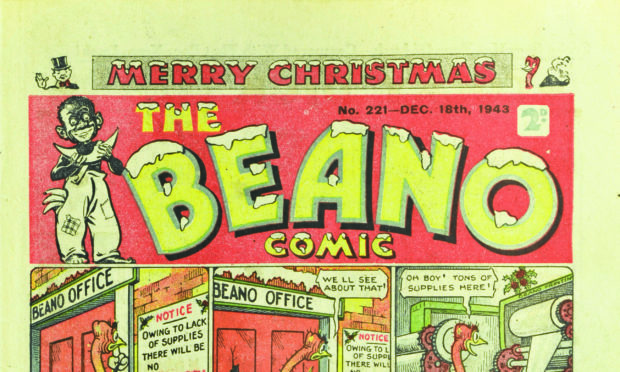In the dark days of the Second World War, the SS drew up a death list.
It’s grim reading. Known as The Black Book, or Special Search List For Great Britain and prepared in 1940, it names 2,820 people the Nazis intended to arrest as they conquered Britain.
It can be found online now, and includes notable individuals from politics, the arts, broadcasting, academia and more. There’s Robert Baden-Powell, founder of Scouting, author Aldous Huxley, actor Noel Coward, politician Neville Chamberlain and, of course, Winston Churchill.
However, contrary to what the BBC reported last week, it does not include the editors of The Beano and The Dandy, even if their comics did lampoon Hitler.
This bizarre myth about The Black Book has been well-covered by comics journalist Jeremy Briggs, who lives on the edge of Courier Country. It’s been eight years since his excellent article debunked the idea, while citing errors in The Sun and The Scotsman. (Google “Nazi death list Beano” and go to the Bear Alley comics blog. It’s impressive work).
So it was wearisome to see this nonsense resurface in last week’s BBC story about a 1940 Beano Book coming up at auction (estimate £1,200-£1,500). The same story ran in The Daily Express, Metro and elsewhere.
Believe it or not, journalists prefer to be right; it’s less work. Errors are usually accidental, and I feel bad for whoever wrote the Beano story and repeated an old mistake they found somewhere.
Today, with the entire developed world able to spread information with a single click, it’s become a shared responsibility to verify facts and to challenge errors when we see them.
Yes, I know I’m a pedantic geek, but this goes beyond one persistent little myth about children’s comics in wartime. Spread enough lies and the truth becomes undermined. We must challenge the dishonest, stupid and careless.
The Holocaust happened. So did Sandy Hook. The Brexit bus lied. Truth is truth, whatever Rudy Giuliani says.
Click around. Check your facts. Our freedom to do these things exists because the Nazis never got to use The Black Book. Think about it.










